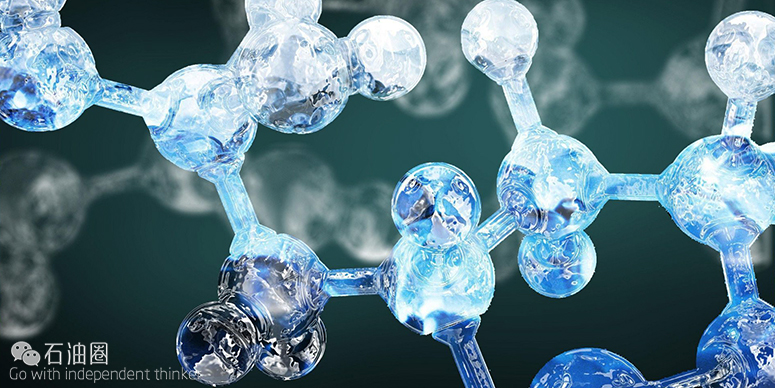Baker Hughes GelBlock temporary annular isolation system provides short-term isolation comparable to cement without permanently blocking off contact with the reservoir or any existing hydrocarbon flowpaths. The GelBlock system is ideal for isolating productive zones during a recompletion or refracturing operation. T hen, by pumping a fast-acting breaker, the plug dissolves quickly and completely, leaving the formation face virtually damage-free for optimized production.
Dependable isolation with fast, easy removal
The water-based GelBlock system incorporates proprietary guar borate chemistry for use at temperatures ranging 125° to 250°F (52 ° to 121°C.) The fluid is pumped into the well in a substantially non-hydrated form. Our experts customize the slurry based on anticipated p ump times and the well’s bottomhole temperature. On location, hydration times can be further optimized by adjusting the slurry’s pH or adding a delay additive.
Time and temperature hydrate the gel slurry, forming a very viscous system which can be spotted across predetermined z ones. Specialize breaker packages ensure simple, complete removal of the plug to restore all available hydrocarbon flowpaths for maximized production rates.
Simplified refracturing applications
In refracturing applications using the GelBlock system, a liner is run in the existing casing. The GelBlock slurry is p umped down to “cement” the liner in place to temporarily isolate any existing perforations. Once the gel has hardened, the new z ones can be perforated and fractured while the existing perforations and fractures remain isolated.
After fracturing is completed, a breaker or acid cleanup dissolves the gel and the liner is removed to permit production flow from both the older fractures and the newly stimulated z ones.
- Technical data;
- Typical Properties;
- Temperature range 125 to 250⁰F (52 to 121⁰C);
- Delay time 30 to 120 minutes.
The GelBlock system is engineered and pumed as a viscous slurry. Shortly after exposure to downhole temperatures, it hardens into a solid that can be used for temporary isolation of a zone. Then, after pumping a breaker, the hardened material becomes a low-viscosity liquid which is easily circulated out with the production flow.
Step 01
One of the most common applications of the GelBlock system is in reperforating or refracturing applications where temporary annular isolation is required across the existing perforation clusters.
Step 02
A liner is run in the existing casing and a GelBlock slurry is pumped down to displace the existing borehole fluids. The slurry is engineered based on anticipated pump times and the well’s bottomhole temperature.
Step 03
In a short, predetermined amount of time, the GelBlock slurry hydrates to “cement” the liner into place and block off the existing perforation clusters.
Step 04
Now that the well’s existing perforations and fractures are isolated, new zones can be perforated and fractured.
Step 05
After the restimulation is completed, the GelBlock system dissolves and the liner can be removed to permit production flow from both the older fractures and the newly stimulated zones. If more rapid gel removal is desired, a breaker or acid can be pumped to accelerate the gel’s breakdown and cleanup.
Applications
- Refracturing operations;
- Recompletion operations;
- Multizon completions;
- Extended-reach perforating.
Features
- Reliable, temporary zonal isolation:
– Near-wellbore plug;
– No invasion into natural fractures.
- Customizable design based on:
– Downhole conditions;
– Bottomhole temperature.
- Controlle hydration times;
- Simplified application, clean-up, and removal;
- Reduced completion costs:
– Eliminate mechanical isolation tools;
– Removes the need for additional cement casing.
GelBlock temporary annular isolation system saved time, fluid costs in refracturing application
Location: Barnett Shale – Tarrant County, Texas
An operator in the Barnett shale in Tarrant County, Texas was experiencing significant production declines in four of his w ells. The wells, which had an average TVD of 7,200 ft (2 194 m) and perforated lateral length of 2,500 ft (762 m), were completed between 2004 and 2007. Daily production for each of these wells peaked shortly after it was brought on line at an average of 2.3 MMcfd. By 2015 however, the average daily production had declined to395 Mcfd.
Restoring production through reperforation
The operator wanted to increase production by reperorating and refraturing the existing laterals. The new perforations would tighten the spacing between clusters and a new stimulation treatment would create new flow paths from the reservoir.
The operator wished to accomplish this without permanently sealing any flowpaths created during the original completion. The solution they chose for this work was to use a temporary zonal isolation system and Baker Hughes’ new GelBlock temporary annular isolation system was deployed in one of the four wells.
An optimized gel design
In order to create an annulus for the isolation, a 3½-in. liner was dropped into the existing 5 ½-in. casing and a viscous GelBlock slurry was pumped t rough the wellbore and circulated into the annulus. Baker Hughes engineered the slurry to optimally fill the annular space between the liner and casing.
The GelBlock slurry’s set up time was carefully engineered based on the lateral’s 190°F (88°C) bottomhole temperature to eliminate the risk of a premature set while also avoiding an y unnecessary delays. The gel set up quickly after filling the annulus to avoid any circulation leak off and no additional fluid top offs were require d. In comparison, the alternative gel solution used on the other three wells had to be topped off, delaying each application b an average of five hours and adding an average USD 10,000 in fluid costs.
After the reperforation and refracturing operation was completed, the gel broke back and the liner is now ready to be pulled to restore full access to the wellbore.
Once the liner is pulled, the operator will have full bore with no ID restrictions and be able to flow hydrocarbons from both the old and new perforations and fractures.

 石油圈
石油圈
